Exhibition Inquisition Instruments of Torture in Granada
Have you ever wondered what dark secrets lie within the walls of Granada’s Exhibition Inquisition Instruments of Torture?
Step into a realm where history’s most sinister tools reveal tales of agony and fear. As visitors encounter devices that once inflicted unimaginable suffering, they are beckoned to confront the chilling reality of the past.
From the eerie atmosphere to the haunting artifacts, this exhibition promises a journey into the depths of human cruelty that will leave you questioning the boundaries of morality and the legacy of torment.
Key Points

- Torture instruments in Granada exhibit brutal methods of inflicting pain and fear.
- Notable devices like Iron Maiden and Spanish Boot were used for punishment and intimidation.
- Torture methods left lasting psychological scars on victims and society, shaping cultural norms.
- Balancing historical accuracy with ethical concerns is essential in displaying torture exhibits.
Historical Significance of Torture Instruments
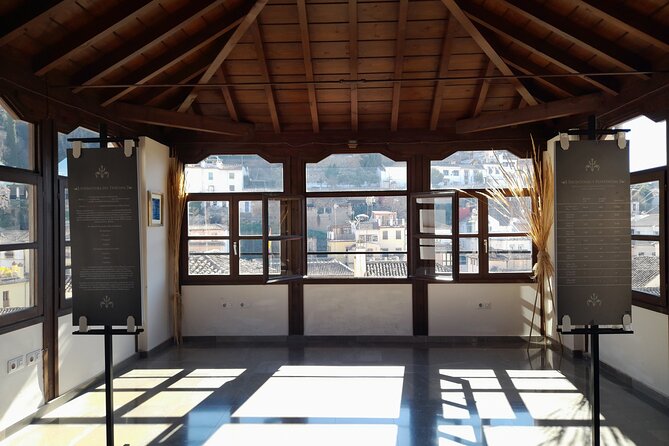
The historical significance of torture instruments throughout the Inquisition era in Granada sheds light on the brutal methods used to extract confessions and maintain control. These devices not only inflicted physical pain but also had profound psychological effects on both the victims and the society witnessing such horrors.
The cultural perceptions surrounding these instruments were complex, as they symbolized power, fear, and the dominance of authority. The mere presence of these tools instilled terror in individuals, coercing them to comply with the demands of inquisitors.
Plus, the use of torture instruments perpetuated a culture of silence and obedience, where speaking out against injustices was met with severe consequences. The legacy of these devices continues to remind us of the dark chapter in history when fear and oppression reigned.
Notable Torture Devices on Display
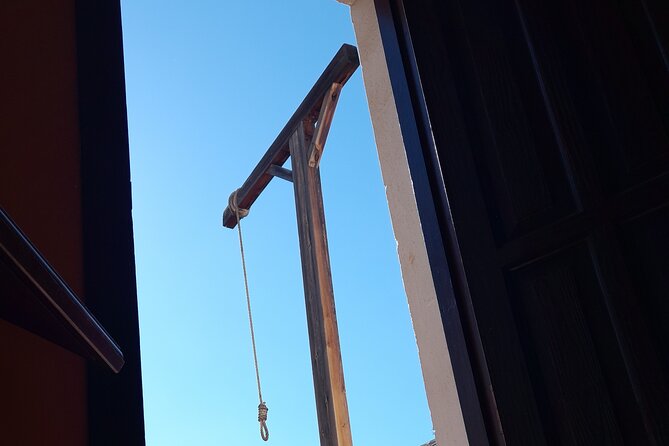
Among the chilling artifacts showcased in the exhibit are some of the most infamous torture devices used during the Inquisition in Granada. These devices provide a harrowing glimpse into the dark history of torture methods. Visitors can see firsthand how these tools were utilized to extract confessions and instill fear. The table below highlights some notable torture devices on display, shedding light on their mechanisms and purposes.
| Torture Device | Description | Purpose |
|---|---|---|
| Iron Maiden | Spiked coffin used for confinement | Infliction of pain and intimidation |
| Judas Cradle | Pyramid-shaped seat for impalement | Extraction of confessions through agony |
| Spanish Boot | Metal device for crushing lower leg | Coercion and punishment |
| Pear of Anguish | Expandable pear-shaped instrument | Infliction of pain in sensitive areas |
| Scold’s Bridle | Mask with spikes to silence and punish | Humiliation and control |
These devices serve as stark reminders of the psychological effects and cultural perceptions surrounding torture practices during that era.
Impact of Torture Methods on Society
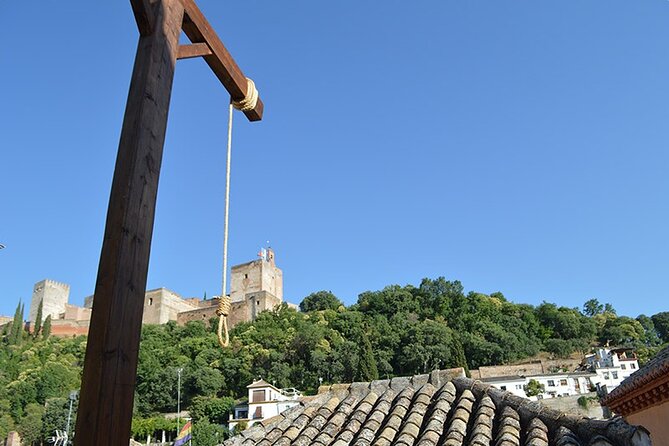
Pondering the historical remnants of these tormenting devices, one can discern the enduring societal repercussions of torture methods employed during the Inquisition in Granada.
-
Psychological effects: The use of these brutal torture techniques left lasting mental scars on both the victims and the broader society.
-
Societal repercussions: Torture methods perpetuated fear, distrust, and a culture of silence, impacting community relationships and trust in authority.
-
Cultural interpretations: The acceptance or rejection of torture practices reflected societal norms and values, shaping the cultural identity of the region.
-
Ethical implications: The utilization of torture raised ethical dilemmas regarding human rights, justice, and the role of punishment in society.
Understanding the multifaceted impact of these methods sheds light on the complex legacy of torture in Granada.
Evolution of Torture Techniques Over Time
Exploring the progression of torture techniques through history uncovers a chilling evolution marked by ingenuity and cruelty. Over time, the evolution of torture techniques has been influenced by various factors, including advancements in technology, changes in societal norms, and the quest for more effective methods of inflicting pain.
From ancient methods like the rack and the wheel to more sophisticated techniques such as waterboarding and electrical shock, the evolution of torture techniques reflects a dark aspect of human history. The refinement and innovation in these methods demonstrate a disturbing trend towards more efficient and brutal means of interrogation and punishment.
Understanding the evolution of these techniques provides insight into the depths of human depravity and the lengths to which individuals have gone to inflict suffering on others.
Controversies Surrounding Torture Exhibits
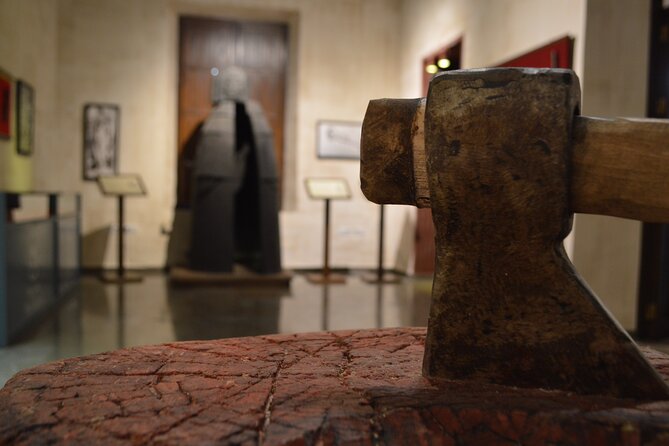
Controversies often arise surrounding the public display of torture exhibits due to ethical concerns and differing perspectives on historical interpretation. Some key points to consider include:
-
Ethical Implications: Many argue that exhibiting torture devices may glorify violence and desensitize the public to the horrors of the past.
-
Public Perception: The way torture exhibits are presented can shape how visitors perceive historical events and impact their understanding of the past.
-
Sensitive Content: Displaying graphic depictions of torture may trigger strong emotional responses and raise questions about the appropriateness of such displays.
-
Educational Value: Balancing the need for historical accuracy with ethical considerations is crucial to ensure that these exhibits serve a meaningful educational purpose without sensationalizing violence.
Educational Value of Torture Exhibitions
Highlighting the historical significance and context of torture exhibitions enhances visitors’ understanding of past practices and societal norms. By showcasing these instruments of torture in a controlled environment, museums serve as educational tools, offering insights into the methods used to extract confessions and maintain social control.
While some argue that such exhibits may glorify violence or desensitize individuals to human suffering, others maintain that they’re essential for preserving history and fostering critical discussions about ethics and human rights. In navigating the ethics debate surrounding these displays, it becomes evident that they’ve the potential to provoke thoughtful reflection on the darker aspects of humanity and the importance of upholding ethical standards in society.
Common questions
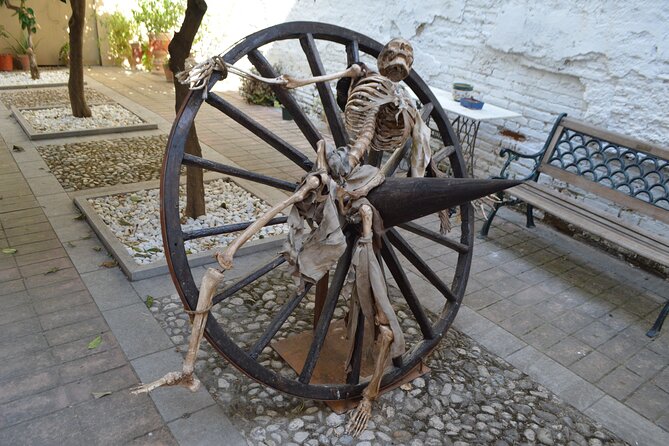
Can Visitors Try Out the Torture Instruments on Display?
Visitors cannot try out the torture instruments on display. Historical significance is preserved through viewing only. This ensures respect for the past and maintains the educational nature of the exhibition.
Are There Any Age Restrictions for Attending the Exhibition on Torture Instruments?
Age restrictions are in place for visitor participation in the exhibition. It’s important to check the guidelines before attending. Visitors should be aware of any age limits to ensure a suitable experience for all attendees.
How Often Are the Torture Instruments Cleaned and Maintained for Display?
Torture instruments at the exhibition undergo regular cleaning and maintenance to preserve their historical significance. A meticulous cleaning schedule and preservation techniques ensure the artifacts remain in optimal condition for display, enhancing the visitor experience.
Is Photography Allowed Inside the Exhibition of Torture Instruments?
Photography is generally allowed inside the exhibition, but certain restrictions may apply. Visitors can capture memorable moments while exploring interactive experiences, but it’s advisable to check with staff for specific guidelines to ensure a respectful and enjoyable visit.
Are There Any Interactive Elements or Activities Related to the Torture Exhibits for Visitors to Participate In?
Visitor engagement at the exhibition includes interactive experiences like guided tours, hands-on demonstrations, and historical reenactments. Visitors can actively participate in learning about the torture exhibits, enhancing their understanding of this dark history.
Last Words
Step into the chilling world of torture devices at the ‘Exhibition Inquisition Instruments of Torture in Granada’ and uncover the dark history of the Spanish Inquisition.
Through a collection of authentic instruments, visitors are transported to a time of persecution and torment, gaining a deeper understanding of the inhumane practices that once prevailed.
Explore the sinister past and discover the harrowing stories behind these instruments of terror, shedding light on the brutal methods used during this dark period in history.